Shanxi Museum was formerly founded in 1919 as Shanxi Educational Book Museum and renamed Shanxi Museum in 1953. The new building of the museum was completed in 2004 and open to public in 2005, covering an area of 168 Mu and a construction area of 52000 square meters. In July 2019, Shanxi Bronze Museum, a branch of Shanxi Museum, officially opened.
According to the data in July 2020, Shanxi Museum has a total collection of more than 500,000 pieces, including 40,282 pieces (groups) of precious cultural relics, among which 2129 pieces (groups) are of first-class, and more than 110,000 volumes of ancient books. The collections mainly come from the archaeological excavation since 1920s and what has been collected in the past 100 years. There are many valuable bronze ware, porcelain, stone carvings, Buddhist statues, murals, calligraphy and painting, etc.
The main hall of Shanxi Museum is a 4-storey building endowed with the meanings of "dou" (a measure for grain) and "ding" (pot). In Chinese culture, "dou" symbolizes the joy of harvest, and "ding" symbolizes stability and auspiciousness. With the landscape design of pools, water, sculpture, outdoor exhibits, a rich cultural atmosphere is created here and the central hall imitates Yingxian Wooden Pagoda. Apart from the 12 basic exhibits of “Jin Soul” and the 3 exhibits in Shanxi Bronze Museum, there are occasional temporary exhibits cooperated with home or foreign individuals and organizations.
The basic exhibition of Shanxi Museum, with the theme of "Jin Soul" (Shanxi is called Jin for short), consists of seven historical and cultural exhibits and five artistic ones. It fully displays the history of Shanxi from Paleolithic age to modern times and its distinctive achievements in Buddhism, opera, business, architecture, etc.
| Basic Exhibits | Units | Contents | Representative Collections |
| Cradle of Civilization | Life of the Remote Antiquity | The early, middle and late Paleolithic cultural remains in Shanxi Province | Fossilized teeth of Dingcun Man, Pointed stone with three edges (about 120,000 years ago), Stone scraper with concave blade (about 125,000 - 104,000 years ago) |
| Taproot of Chinese Civilization | The cultural remains of Neolithic Age about 7000 to 4000 years ago found in Shanxi Province | Painted pottery basin, Painted pottery pot (about 4,000 B.C.), Earthen drum (about 2,500 B.C.) | |
| Trace of The Xia And Shang Dynasty | Ruins of Xia Period (2070 B.C. - 1600 B.C.) | The remains of Xia culture (Dongxiafeng Site in Xiaxian, etc.) found in southern Shanxi, the "Dongtaibao Culture" found in central Shanxi, and the sites of Baiyan and Youyan, etc. | Pottery zeng (rice steamer), Three-leggedding (cooking vessel) with the rope pattern; Grey pottery li (cooking tripod) with the rope pattern |
| Important Places of Shang Dynasty (1600 B.C. - 1046 B.C.) | The bronze artifacts of the early Shang Dynasty unearthed in Nanguan of Yuanqu County and Dongxiafeng of Xiaxian county | Qinluan quadripod, Taotie-patterned bronze tripod | |
| Treasures of the Local States | Bronzes of the late Shang Dynasty found in Lingshi, Shilou, Liulin, Baode, etc. | Animal-shaped Gong (wine vessel), Xiao-shaped You (wine vessel) | |
| Achievements of Jin Kingdom | Pride of the Hefen Culture | The "Tianma Qucun site" at the junction of Quwo and Yicheng reveals a large area of cultural relics. Among them, tens of thousands of cultural relics have been unearthed from the "Cemetery of Jin Marquis" | Bird-shaped zun (wine vessel) of Jin Marquis, Pig-shaped zun, He (wine vessel) with a bird-shaped lid and human-shaped feet |
| Jin Kingdom Seeking Hegemony during the Spring and Autumn Period (770 B.C. - 476 B.C.) | Cultural relics unearthed from the site of Jin State in Houma | Animal-patterned rectangular hu (wine or water vessel), Chimes, Plate | |
| Disintegration and Remaining Influence of the Jin Kingdom | Cultural relics of the Warring States Period (475 B.C. - 221 B.C.) | Phoenix-patterned mirror, Rope-patterned tripod ding with three rings on the lid and two ring handles, Huo ding (cooking vessel) | |
| Melting Pot of Different Nationalities | On Both Sides of the Great Wall | Cultural relics in the period of Han (206 B.C. - A.D. 220), Wei & Jin (A.D. 220 - 420) and Wu Hu Sixteen Kingdoms (A.D. 304 - 439) | Hu Fu wine vessel (26 B.C.), Furnace ornamented with four mythical animals, Bronze lamp in the shape of wild goose and fish |
| The Pingcheng Times | Cultural relics of the Northern Wei Dynasty (A.D. 386 - 534) | Stone-carved column base (A.D. 484), Wood lacquer painting, Acrobat figure | |
| The Capital City of Jinyang | Cultural relics unearthed from the tombs of Lou Rui, Xu Xianxiu and Yu Hong in the Eastern Wei (A.D. 534 - 550) and Northern Qi (A.D. 550-577) dynasties | Bronze oxcart, Braided horse-riding warrior, Gold ornament | |
| Foreign Exchanges | The results of ethnic integration and foreign exchange in Shanxi | Glass bowl, Gold-and-silver-gilded goblet carved with human and animal patterns, The body of the stone coffin of Yu Hong's Tomb | |
| The Relics of Buddhism | The Northern Dynasty (A.D. 386 - 581) | Buddhist art of the Northern Dynasties | Stone tablet engraved with the life of Cheng Zhe, Stone-carved figure of standing Buddha Shakjamuni, Stone-carved head of Buddha Shakjamuni |
| The Peak Period of the Tang Dynasty (A.D. 618 - 907) | Buddhist sculpture art in the prosperous Tang Dynasty | Stone-carved figure of standing Bodhisattva, Stone-carved head of Bodhisattva, White stone painted statue of Manjusri Bodhisattva riding on a lion | |
| The Humane Facets of the Buddhism | The remains of Chinese Buddhist art in Shanxi's social, cultural and artistic life | Gilded statue of Cundi Bodhisattva (A.D. 1368 - 1644), Square-holed gold coins (minted in the 1st year of the Chunhua reign) (A.D. 990), Stone-carved head of Bodhisattva (1115-1234) | |
| The Hometown of Operas | Songs and Dances: Worship and Entertainment | Folk song and dance art of past dynasties | Pottery xun (wind instrument) (Neolithic Age), Copper mat weights in the shape of ancient comedians (206B.C.- A.D. 8), Brick carving themed the traditional festival entertainment in a melon patch |
| Traditional Opera: Popularity and Civilization | Opera art rooted in folk life | Pottery figures of the twenty four filial exemplars (A.D. 1115-1234 ), Brick carving of the Eight Immortals | |
| Poetic Dramas: Art and Life | Zaju art risen in southern Shanxi in Song (A.D. 960 - 1279), Jin (A.D. 1115 - 1234) and Yuan (A.D. 1271 - 1368) Dynasties | Sculptures of a stage and zaju(poetic drama) players (A.D. 1210), Brick carving from the Jin Tomb, Script of a play adapted from an excerpt of Heroes of the Marshes | |
| Shadow Play: Silhouette and Custom | Shanxi shadow play | Shadow puppets, Shadow puppetry performance | |
| Shanxi Merchants | Pioneering Steps | Steps of Shanxi merchants | / |
| Dominating Position | Shanxi Merchants' bank in Qing Dynasty | The paper currency of Yuhede Money Shop, The 23rd contract of the Weitaihou Exchange Shop in Pingyao The license of the Weitaihou Exchange Shop in Pingyao | |
| Far-reaching Influence | Shanxi Merchants guild hall and luxury houses in Jinzhong | Qiao's Grand Courtyard, Colorful folding screen with a garden-lady painting, Folding screen with the pattern of two lions | |
| Ancient Architecture | Architectures as Silent Music | Shanxi ancient architectural art | The main hall of the Nanchan Temple, The east main hall of the Foguang Temple, The Sanqing (three immortals) Hall of the Yongle Palace |
| Architectural Frescoes as Painting Art | Ancient temple murals in Shanxi | Bodhisattvas, Preaching Sakyamuni, Thousand-hand and Thousand-eye Goddess of Mercy | |
| Painted Sculptures in Temples - Superlative Craftsmanship | The art of colored sculpture in Shanxi | The statue of the Goddess of Mercy, Clay-sculptured Maitreya Buddha, Colorful clay sculptures of twenty-eight constellations (8 statues) | |
| Colored Glaze for Architectural Purpose | Glass art of Shanxi architecture | Yellow-glazed pottery lion, Three-color glazed pottery censer with the pattern of lotus seedpod and lion, Colorful glazed yunguan (stigma or column cap) | |
| Jade | Ceremonial Jades | / | Jade cong (often used as a sacrificial vessel), Jade drum, Jade bi (sacrificial or ritual vessel) with the millet pattern |
| Pendent Jades | / | Jade huang (ritual or ornamental vessel), Beast-shaped jade jue (ornament), Jade horse | |
| Burial Jades | / | Jade pieces (found on the face of the tomb owner), Jade cicada, Jade pig | |
| Jades as Decorative Art | / | Gray jade artificial hill with a figure hollow engraving, Gray jade statue of an elephant-riding boy, Gray jade fingered citron | |
| Jades as Daily Utensils | / | Gray jade lotus-patterned cup, Eared xi (vessel for washing brush pens) with the double-fish pattern at the inner bottom, Gray jade gold drawing petal-patterned bowl | |
| Paintings and Calligraphy | Paintings | / | Bamboo painting scroll by Gu An of the Yuan Dynasty |
| Calligraphy | / | Cursive script of Du Fu poems written by Zhu Yunming in the Ming Dynasty | |
| Ancient Chinese Currency | Pre-Qin Periods (17th Century B.C. - 221 B.C.) | / | Seashell, Square-foot bu (copper coin) of the Eastern Zhou Dynasty, Three-hole bu (copper coin) |
| Qin and Han Dynasties (221 B.C. – A.D. 219) | / | Copper coin mould, Golden ingots, Copper coin with the characters “大泉五十” | |
| Three Kingdoms, Jin, Southern and Northern Dynasties (A.D. 220 - 580) | / | Copper coin with characters “常平五铢” | |
| Sui, Tang, Five Dynasties and Ten Kingdoms (A.D. 581 - 959) | / | Copper coin with the characters “开元通宝” on one side and the star-moon pattern on the other | |
| Song Dynasty (A.D. 960 - 1279) | / | Copper coin with the characters “宋元通宝”, Copper coin with the characters “建炎通宝” (basic couple coins written in regular script and seal script) | |
| Liao Empire, Jin Empire, Western Xia and Yuan Dynasties (A.D. 916 - 1367) | / | Copper coin with the characters “千秋万岁”, Paper money printing board | |
| Ming and Qing Dynasties (A.D. 1368 - 1911) | / | Copper coin with the characters “洪武通宝” (with the character "济" on the reverse), Copper coin with the characters “同治重宝” (sample money issued by the Ministry) | |
| Ancient Chinese Porcelain | Porcelain of Northern Plain Style in the Early Dynastic Periods | / | White porcelain powder box, White porcelain box with the brown peony pattern, White porcelain wine bottle |
| Painted Porcelains of the Yuan, Ming and Qing Dynasties | / | Blue and white vase with the peony pattern, Red wine bottle, White porcelain bowl painted with the playing children pattern |
Where to see: Exhibit of “Achievements of Jin Kingdom”
The Bird-shaped Zun (wine vessel) of Jin Marquis of the Western Zhou Dynasty (1046 B.C. - 771 B.C.) is the prototype of Shanxi Museum's emblem and the "treasure of the museum", which is known as "the glory of Jin State". It is a wine container, 39 cm in height, 30.5 cm in length and 17.5 cm in width. The bird's head is slightly raised. Its body is plump and the wings are curled up. A little bird quietly lies on its back and works as the handler of the zun. An elephant head is under the bird’s tail with its trunk curling up, forming a stable three-point support with the legs. On different parts of the zun, there are exquisite decorative patterns such as feather, cloud, thunder and so on. The Bird-shaped Zun was unearthed in A.D. 2000 in the tomb of Xiefu, the first Marquis of Jin, through which the capital and lineage of Jin State in the Western Zhou Dynasty has been confirmed. That is also why this cultural relic is of such great significance.
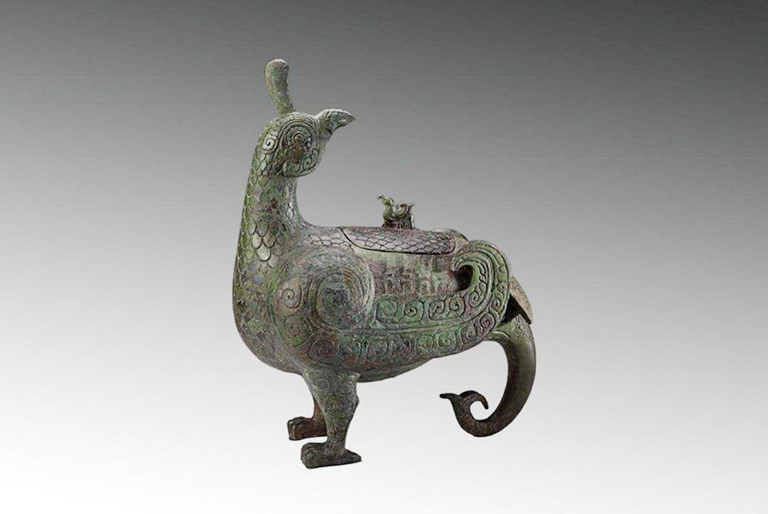
Bird-shaped Zun of Jin Marquis
Where to see: Exhibit of “Cradle of Civilization”
This painted pottery pot of the Neolithic Age (about 4000 B.C.) is 45 cm in height, 35 cm in diameter, and 43 cm in abdominal diameter. In 1989, it was unearthed in Jinshengzhuang village, Ruicheng County, Yuncheng City, Shanxi Province. This is a clay red pottery with polished surface, short neck, wide shoulders, protruding upper abdomen, adducent lower abdomen, and small flat bottom. The upper abdomen is decorated with flower patterns formed by arcs and dots. It is large in size and complete in shape. Such a classic relic of Yangshao culture with beautiful shape, vivid curve and ingenious conception is rare even throughout the country.
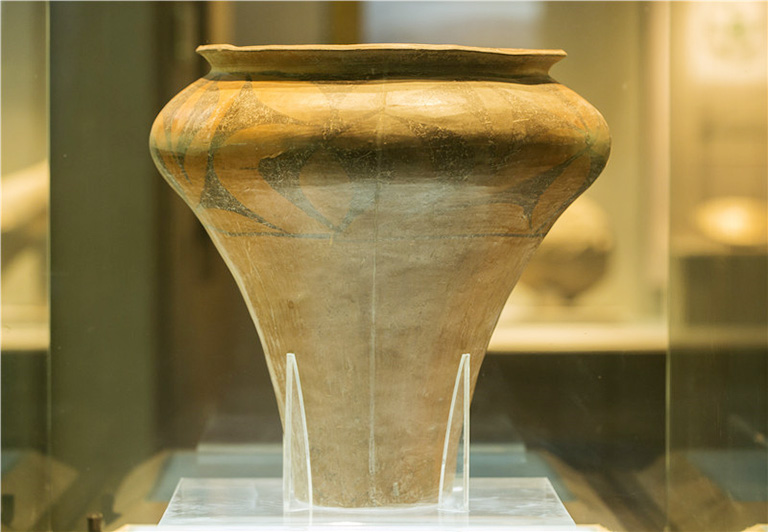
Painted Pottery Pot
Where to see: Exhibit of “Jade”
This jades group was unearthed from tomb No. 63 of the cemetery of Jin Marquis in Beizhao Village of Quwo County in 1993. The largest Huang (semi-annular jade pendant) is 15.8 cm long. The whole item is composed of jade Huang, Heng, jade tube, bead, agate tube, etc. with 204 pieces in total. When stretching up, the whole jade group can reach as long as 2 meters. The decorative patterns are mostly made in double hook technique, very exquisite. It is listed as first grade cultural relic and is prohibited from going abroad for exhibition.
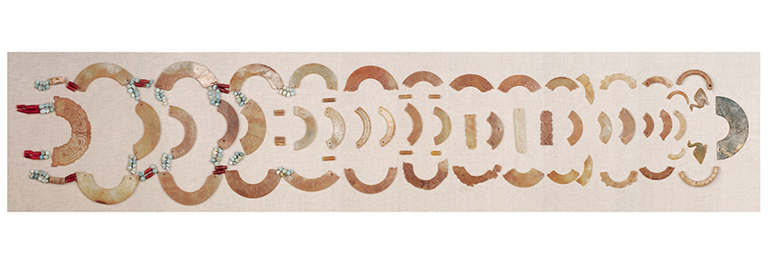
Jade Group of the Wife of Jin Marquis
Where to see: Exhibit of “Ancient Architecture”
It is 57 cm in height and 24 cm in caliber, unearthed in Lishi County in 1982. It is an incense burner placed in front of the Buddha statue in the temple for the worship of the gods. It is made of red clay, glazed in yellow, green and white, quite elegant colors that form a simple style. The censer cover is like a lotus seedpod and a lion on the platform of the lotus petal is erect, opening its mouth and sticking out its tongue. It is a good item of colored glazed artwork made at the turn of the Yuan (A.D. 1271 - 1368) and Ming (A.D. 1368 - 1644) dynasties.
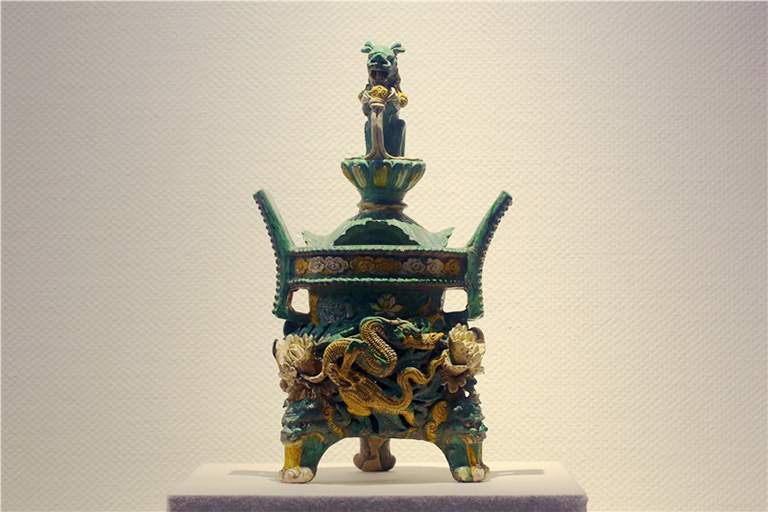
Three-color Glazed Pottery Censer with the Pattern of Lotus Seedpod and Lion
Where to see: Exhibit of “The Melting Pot of Different Nationalities”
It is 82 cm in length, 40 cm in width and 2.5 cm in thickness, unearthed in 1965 in the tomb of Sima Jinlong in Shijiazhai, Datong, Shanxi Province. The two pieces of lacquer screen are connected by mortise and tenon. The board is painted with red lacquer, and tells the story of Biography of Women in Ancient China is in four layers. The lines are black, the faces and hands of the characters are painted in lead white, and the clothing and utensils are yellow, white, green, orange red, gray blue, etc. Wood lacquer painting is the product of cultural integration in the Northern and Southern Dynasties (A.D. 420 - 589), which has high historical and artistic value.
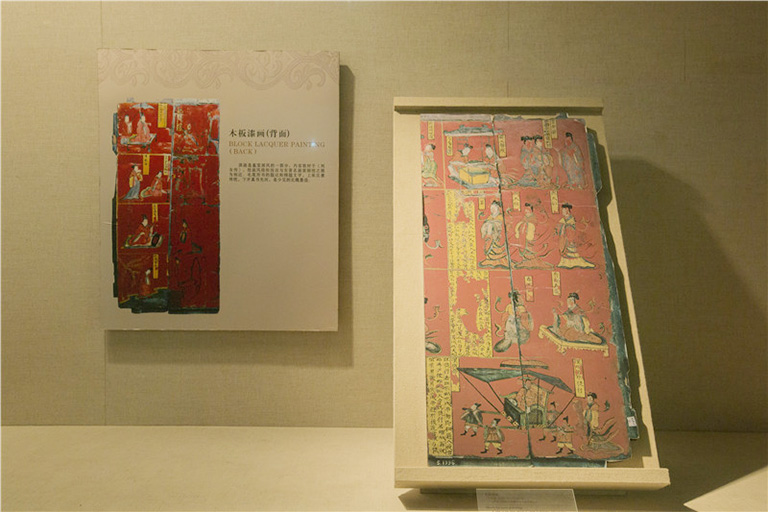
Wood Lacquer Painting in Northern Wei Dynasty
Opening hours: 9:00 - 17:00 (closed on Mondays, the Lunar New Year's Eve and the first day of the first lunar month.)
Address: No. 13, Guangjing Road, Wanbailin District, Taiyuan City, Shanxi Province (about 9 km, 25 minutes’ drive to the south of Shanxi Museum)
Ticket: Free
Shanxi Bronze Museum, the branch museum of Shanxi Museum, is the first provincial bronze museum in China. There are more than 2200 bronzes in the museum from Taosi Site (2300 B.C. – 1900 B.C.) to Qin (221 B.C. - 207 B.C.) and Han (206 B.C. - A.D. 220) Dynasties through the Bronze Age.
It consists of 3 basic exhibits themed in “Glories of Bronze Age”, namely Foundations of Chinese Civilization (the special status of Jin culture in the inheritance and development of Chinese civilization), World of Rites and Music (the distinctive features of Chinese bronzes as ritual utensils and the spiritual connotation of rites and music civilization), and Achievements In Technique and Arts (the advanced technology and outstanding contribution of ancient bronze casting).
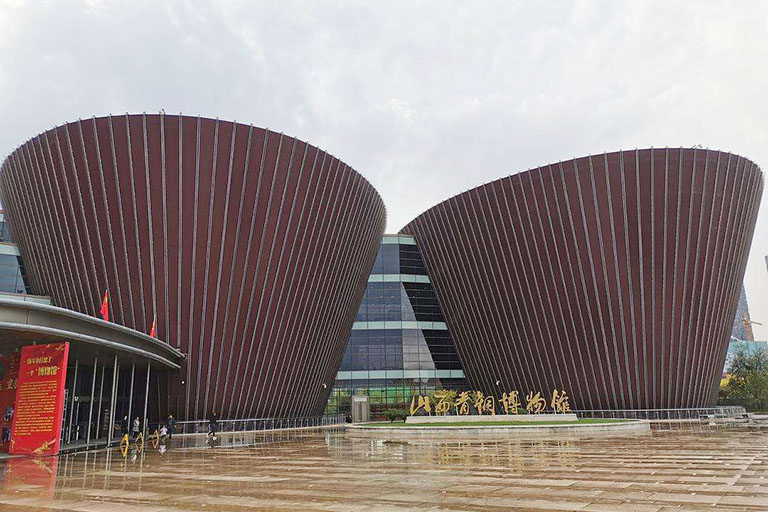
Shanxi Bronze Museum
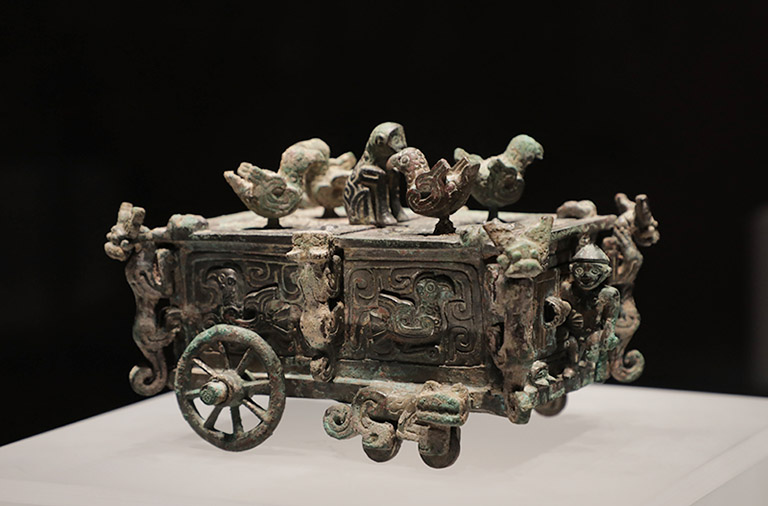
Bronze Cart of the Spring and Autumn Period (770 - 476 B.C.)
Shanxi Museum locates just a river across Taiyuan downtown and Shanxi Bronze Museum is about 9 km from it.
Getting to Taiyuan First: Before getting to Shanxi Museum, you are suggested to reach Taiyuan city first. It is recommended to take a high speed train from Beijing (3 hrs), Xian (3-4 hrs), Pingyao (40min), etc. Flight is also available from Beijing (1.5h), Shanghai (2.5h), Chongqing (2h), Chengdu (2h10min), Wuhan (2h), etc.
Taiyuan to Shanxi Museum Transfer: It is recommended to take a bus or taxi to Shanxi Museum as it is near the downtown area. You can also book a private Taiyuan tour package from us that covers the transfer, ticket, accommodation, meal, etc. to save all the troubles. Contact Us Now>>
Best time to visit Taiyuan: April ~ October when the weather is agreeable with comfortable temperature and not much rain.
How to get to Taiyuan: High speed train from Beijing (3 hrs), Xian (3-4 hrs), Pingyao (40min), etc. and flights from Beijing (1.5h), Shanghai (2.5h), Chongqing (2h), Chengdu (2h10min), Wuhan (2h), etc.
It usually needs 1-2 days to cover the highlights of Taiyuan. Most attractions in Taiyuan are cultural and historical sites such as Jinci Temple - earliest royal ancestral temple garden building complex in China, Chongshan Temple - Buddhist temple with precious original sutras, Twin Pagoda Temple - symbol of Taiyuan, Shanxi Museum - rich collections telling the history and achievements of Shanxi in the past thousands of years, and The Coal Museum of China - the only national coal museum showing you the development of Chinese coal industry and culture. Apart from Jinci Temple which is about 26 km to downtown, the other attractions are in city center with convenient transportation.
☛ 3 Days Cultural Exploration in Taiyuan
As an important transfer hub in central Shanxi, Taiyuan is always travelled with other tourist destinations in Shanxi such as Datong (Yungang Grottoes, Hanging Temple), world heritage site Pingyao Ancient City, sacred Buddhist mountain Mount Wutai, and magnificent Hukou Waterfall.
☛ 3 Days Mount Wutai Buddhism Tour from Taiyuan
☛ 3 Days Taiyuan Pingyao Brief Tour
☛ 6 Day Datong Pingyao Tour Plus Wutaishan Visit
If you have more days and want to travel outside Shanxi, it is highly recommended to extend your tour to capital Beijing (Great Wall, Forbidden City), time-honored Xi’an (Terracotta Warriors), and modern metropolis Shanghai (the Bund).
☛ 8 Days Ancient Beijing & Shanxi Culture Tour
☛ 12 Days Historical China Tour with Train Experience
If you have more questions or ideas about a Taiyuan Tour, please feel free to contact us, we are specialized in tailor-made tours according to your interests, budget, itinerary, etc. Just tell us your needs and all your problems will be solved!
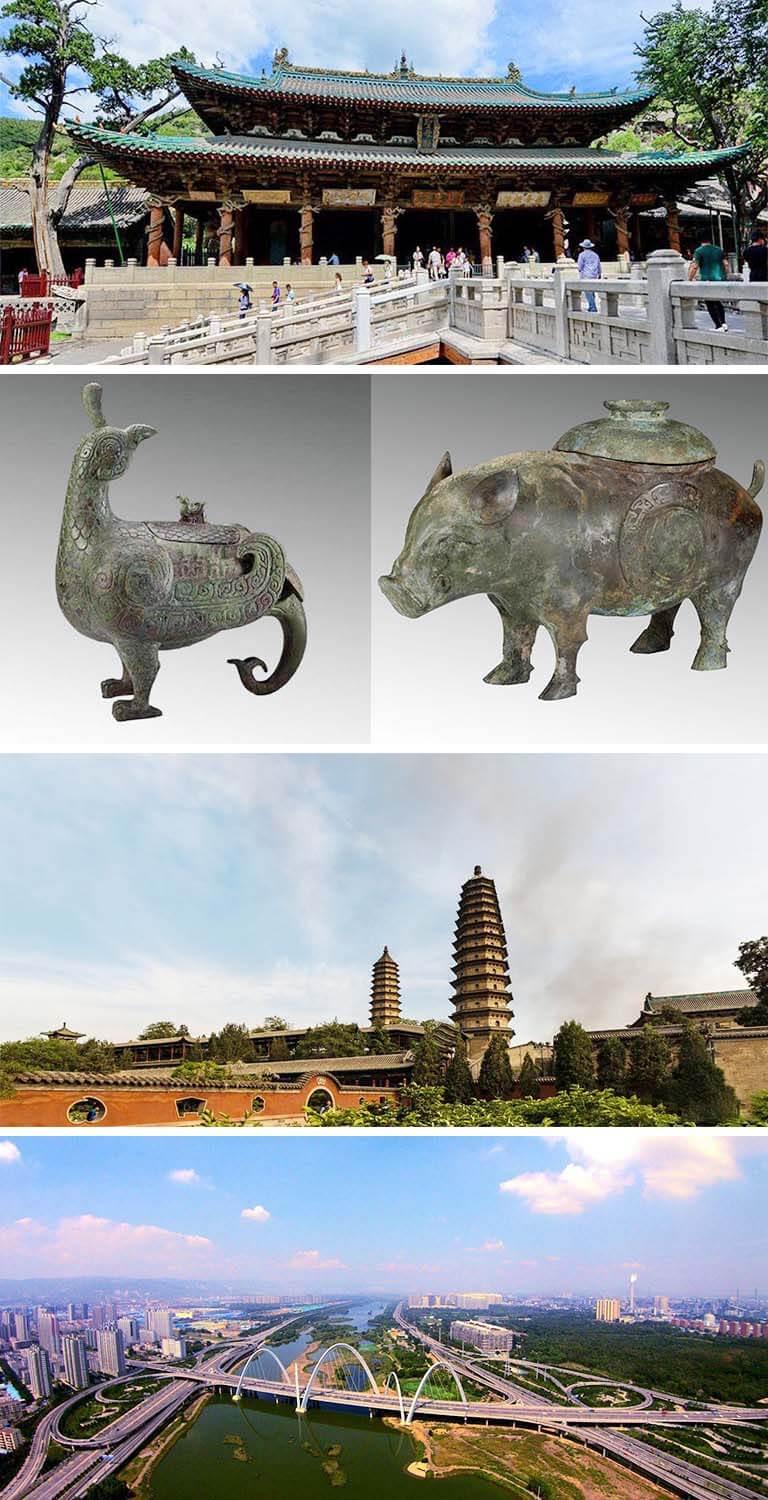
Jinci Temple, Shanxi Museum, Twin Pagoda Temple and Taiyuan City Scenery
Top 3 Taiyuan tours chosen by most customers to explore Taiyuan in the best way. Check the detailed itinerary, or tailor your own trip now with us.
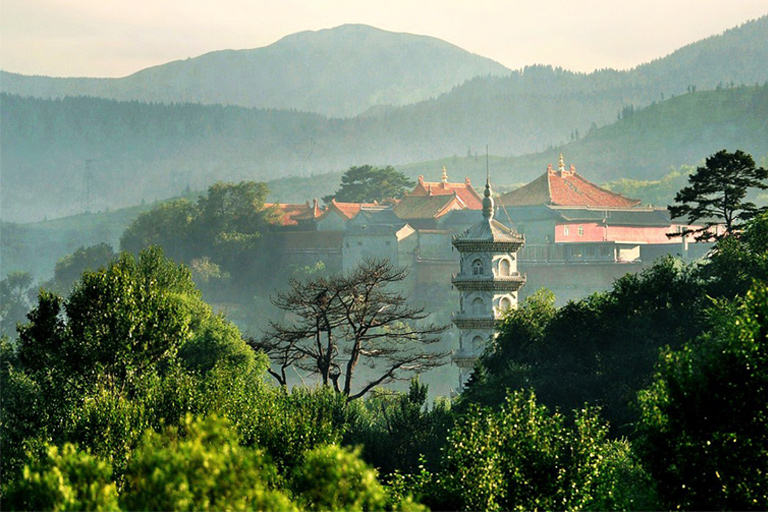
Datong / Wutaishan / Taiyuan / Pingyao
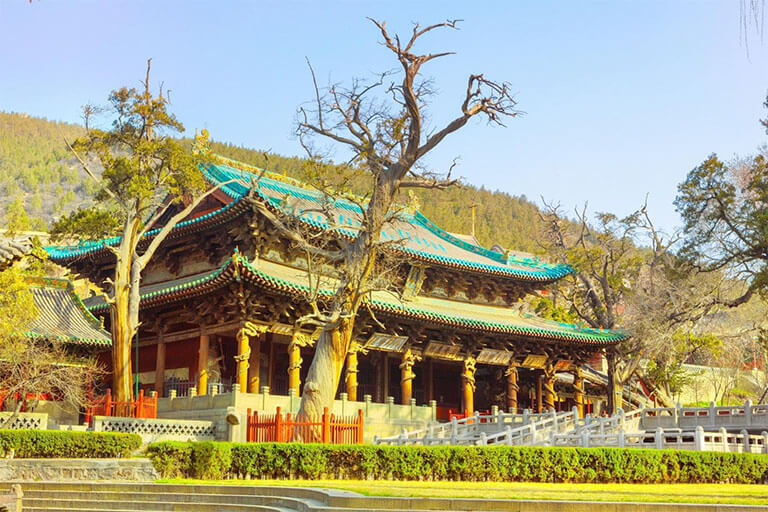
Taiyuan / Pingyao
Start planning your tailor-made holiday to China by contacting one of our specialists. Once inquired, you’ll get a response within 0.5~23.5 hours.
Customize a Trip